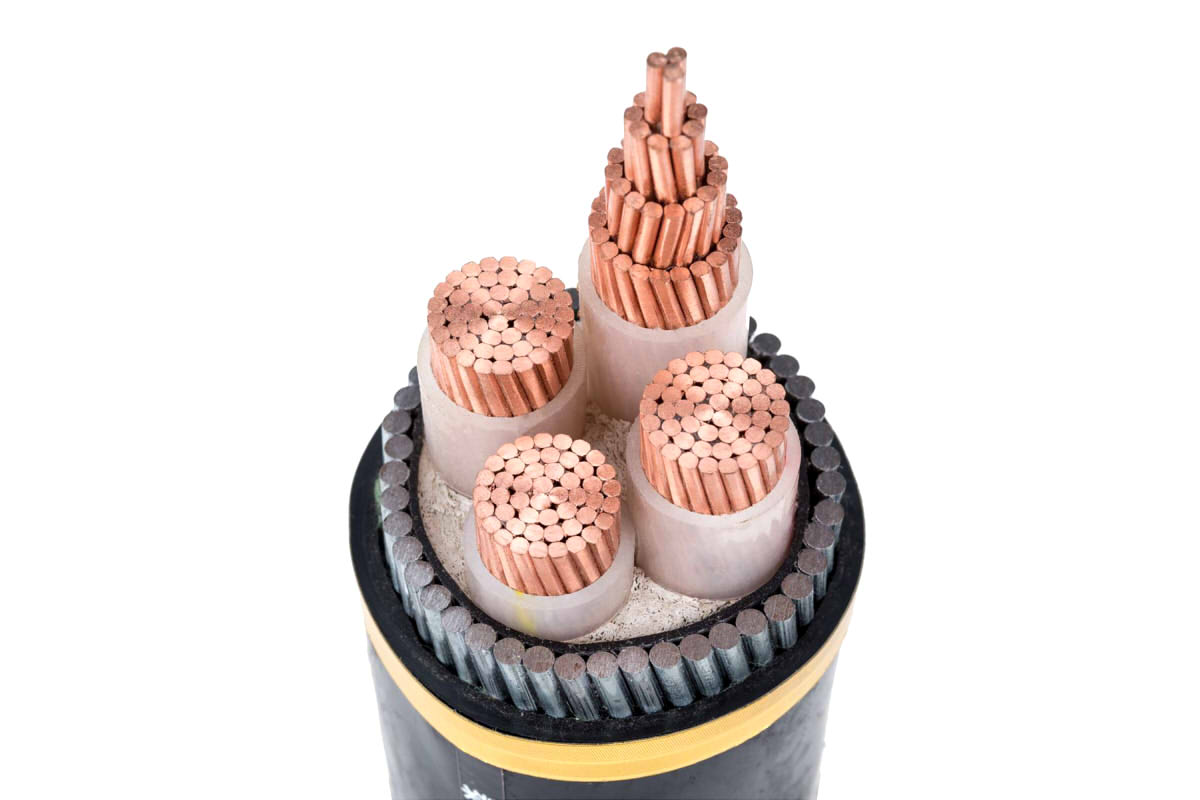Medium voltage cables are fundamental components in the transmission of electricity in a variety of applications. these wires, defined by their nominal voltage that ranges between 1 kV y 35 kV, They play a crucial role in the distribution of electrical energy in various industries and environments. Let's take a look at the applications and characteristics of medium voltage cables.
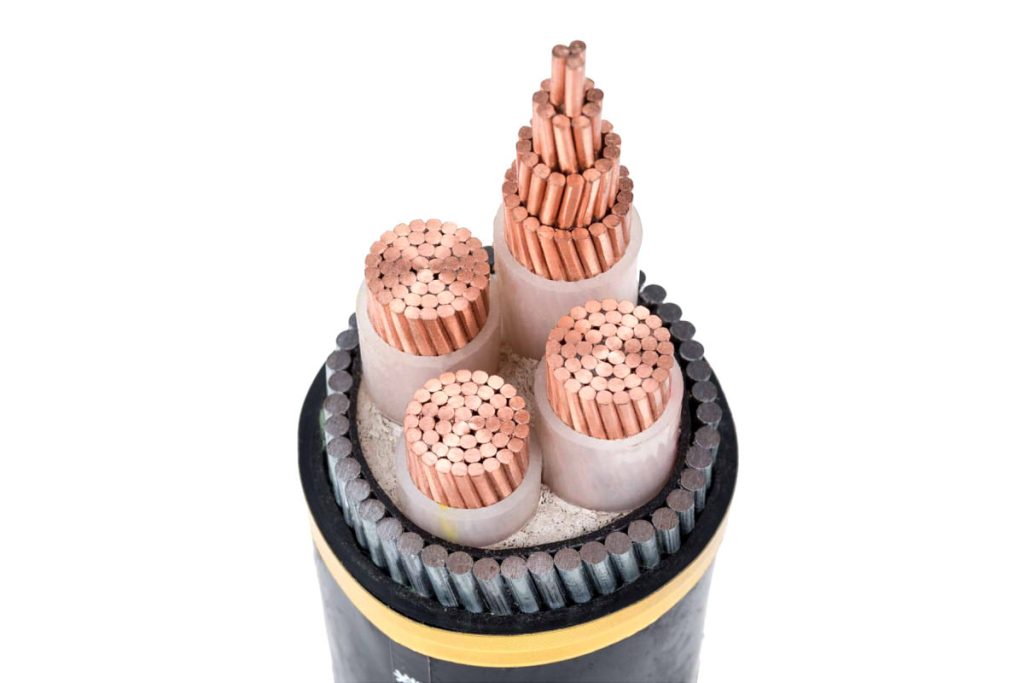
Table of Contents
- Classification of Medium Voltage Cables
- Characteristics of Medium Voltage Cables
- Advantages of Medium Voltage Cables
- Properties of Medium Voltage Cables
- Applications of Medium Voltage Cables
- conclusions
Classification of Medium Voltage Cables
Medium voltage cables can be categorized in several ways, which allows its design and materials to be adapted according to the specific needs of each application. Here we present some of the most common forms of classification:
Conductor
The conductors of medium voltage cables are usually made of copper or aluminum, which gives rise to two main categories: medium voltage cables with copper conductor and medium voltage cables with aluminum conductor. The choice between these materials depends on factors such as electrical conductivity and corrosion resistance..
Insulation material
Insulation is crucial to ensure safe and efficient performance of medium voltage cables. Common insulation materials include polyethylene, cross-linked polyethylene (XLPE), Rubber, and others. This gives rise to three main categories: medium voltage cables with polyethylene insulation, XLPE medium voltage cables and rubber insulated medium voltage cables. The choice of insulation material depends on factors such as operating temperature and resistance to adverse conditions..
Structure
The structure of medium voltage cables can be divided into two fundamental categories: single core medium voltage cables and multi core medium voltage cables. Single core cables have a single conductor and are suitable for carrying single phase power, while multi-core cables have several conductors and are ideal for carrying three-phase power.
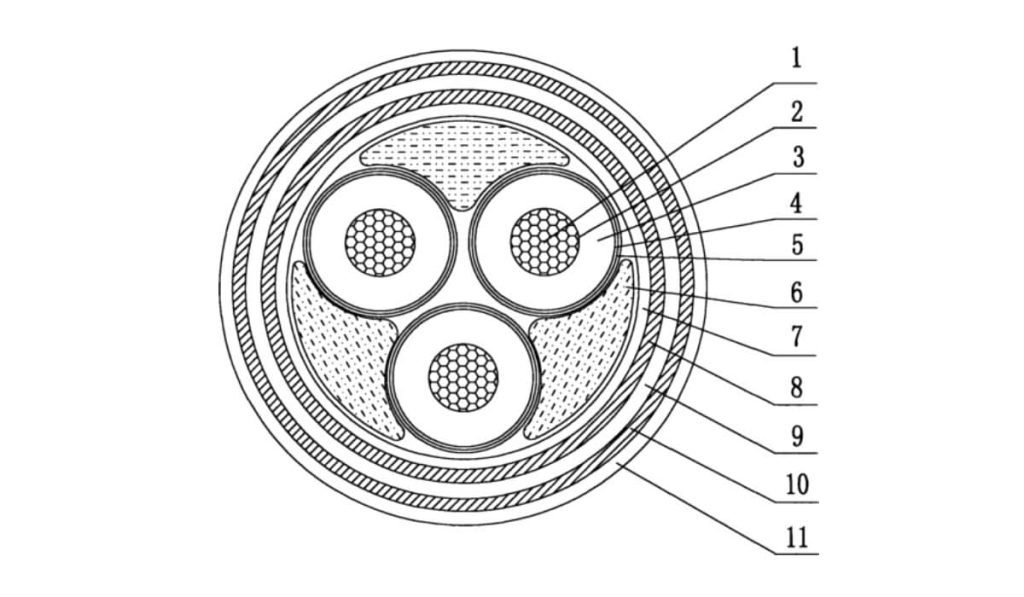
Use
Medium voltage cables are used in various applications, and their classification may be based on their specific purpose. Some examples include medium voltage cables for urban electrical networks, medium voltage cables for industrial use, medium voltage cables for mining, medium voltage cables for the petrochemical industry, among others. Each of these cables is designed to meet the particular requirements of your application.
Characteristics of Medium Voltage Cables
Medium voltage cables exhibit a series of characteristics that make them essential in many electrical power transmission applications.. These features include:
Operating temperature
Medium voltage cables can operate continuously at a maximum temperature of 90 ℃. This makes them suitable for applications requiring high load capacity and efficiency..
Short Circuit Resistance
In situations of short circuit (with a maximum duration of no more than 5 seconds), The maximum temperature of the cable conductor should not exceed 250 ℃. This ensures the safety and integrity of the cable under fault conditions..
Room temperature
Medium voltage cables must be installed in environments where the ambient temperature is not lower than 0 ℃. Ordinary types of medium voltage cables operate reliably except in extreme temperature climatic conditions..
Advantages of Medium Voltage Cables
Medium voltage cables offer a number of significant advantages compared to low voltage cables. These advantages include:
Less Energy Loss
Medium voltage cables are ideal for medium and long distance power transmission., since they experience less energy loss compared to the low voltage cables. This makes them efficient in the distribution of electricity.
Greater Load Capacity
Medium voltage cables can withstand higher levels of voltage and current compared to low voltage cables, making them suitable for applications requiring significant load capacity.
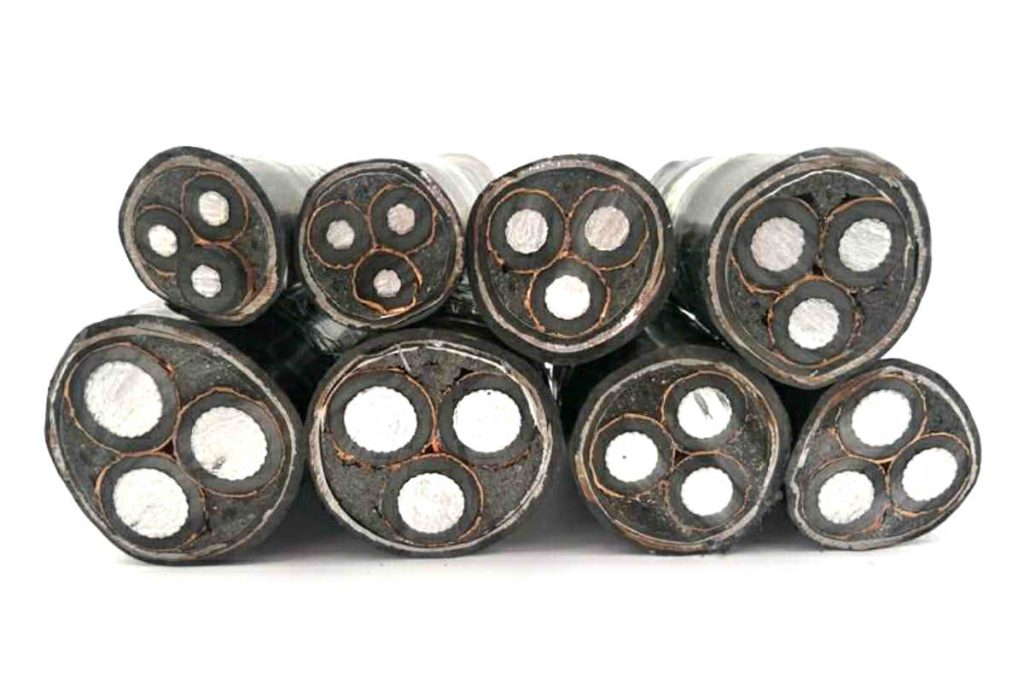
Enhanced Security
These cables are equipped with a strong insulation layer and a robust sheath that reduces the risk of short circuits., fires and electric shocks, improving safety in electrical installations.
They facilitate connection and disconnection
Medium voltage cables are ideal for connecting and disconnecting electrical equipment, as well as for the installation and maintenance of electrical systems, making operation and maintenance easier.
Resistance to Adverse Conditions
These cables can work in harsh conditions, resisting overloads and transient faults, ensuring safe and reliable power supply even in challenging environments.
Properties of Medium Voltage Cables
The performance of medium voltage cables is evaluated based on their electrical and mechanical properties. Some of these properties include:
Electrical Properties
- Endurance: The ability of the cable to withstand electrical current without overheating.
- Capacitance: The ability of the cable to store electrical charge.
- Insulation Resistance: The resistance of the insulating material to electric current.
- Dielectric Loss: The amount of energy dissipated as heat in the insulation.
- Download Features: The behavior of the cable in the event of electric shocks.
Mechanical properties
- Breaking strain: The maximum tension that the cable can withstand before breaking.
- Pressure Resistance: The ability of the cable to resist mechanical pressure.
- Abrasion resistance: The ability of the cable to resist wear.
- Tensile and Flexural Resistance: The ability of the cable to withstand repeated tension and bending.
- Temperature Resistance: The cable's ability to operate at extreme temperatures.
Applications of Medium Voltage Cables
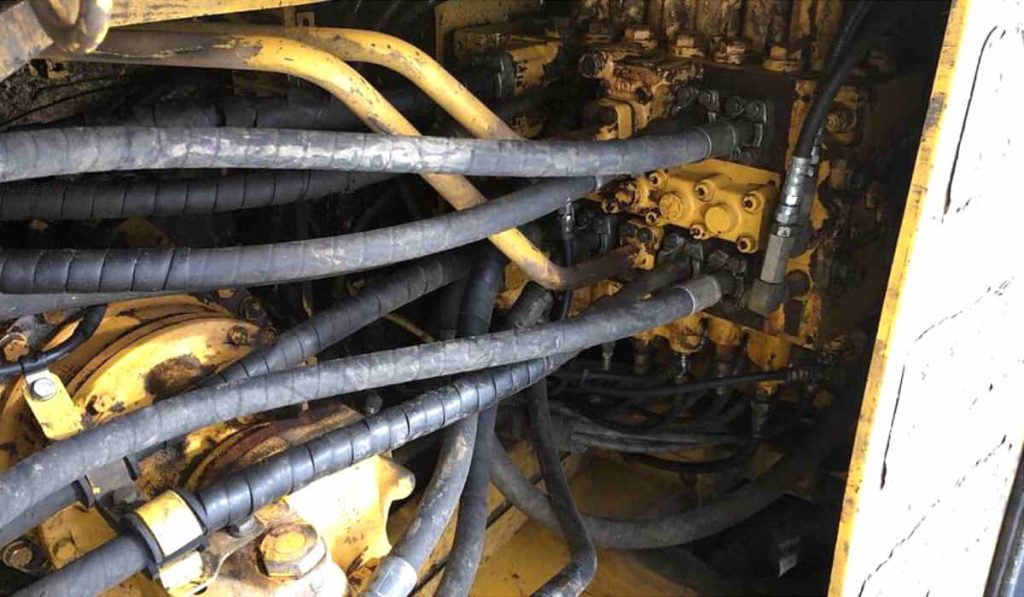
Medium voltage cables have a wide variety of applications in various sectors, including:
Urban Energy Distribution
Medium voltage cables play a crucial role in the distribution of electrical energy in urban areas, efficiently supplying electricity to homes, companies and public services. Usually, in an electrical system, the medium voltage network can supply energy to a region, but it cannot be used to exchange energy between regions. It is the level of voltage found between the high voltage network and the low voltage installation of the building..
Industry and Construction
Some of the largest electricity customers, like industrial companies, the hospitals, the large swimming pools and the large radio and television towers, They usually receive medium voltage electricity supply from their own substations..
Rural Electrical Networks
In rural areas, These cables are essential for bringing electricity to remote and dispersed communities, improving quality of life and economic development.
Feeding Systems in Mining
The mining industry uses medium voltage cables to power heavy equipment and extraction systems in demanding conditions.
Railway transport
Railway systems with traction voltages between 15 kV y 25 kV depend on medium voltage cables to ensure efficient power supply to locomotives and railway systems.
Large Mobile Systems
Applications such as cranes and belt conveyor systems also require medium tension flexible cables specifically designed to support movement long lasting and high dynamic.
conclusions
Medium voltage cables are essential components in the transmission of electricity in a wide range of applications. The characteristics of medium voltage cables, advantages and mechanical and electrical properties make them a reliable and efficient option for the distribution of electrical energy in diverse environments. Whether in urban networks, transport systems or specialized industries, These cables play a crucial role in modern electrical infrastructure, improving quality of life and economic progress. The appropriate choice of medium voltage cables according to the specific needs of each application is essential to guarantee a safe and efficient electricity supply..

